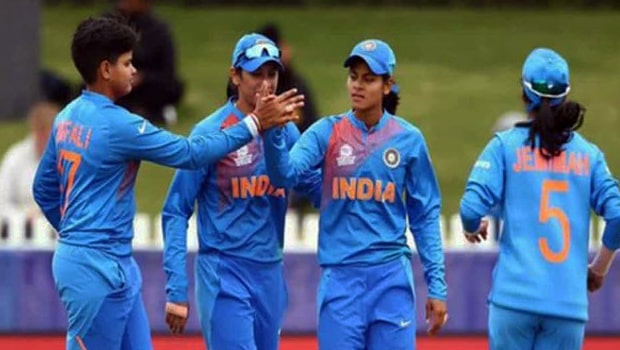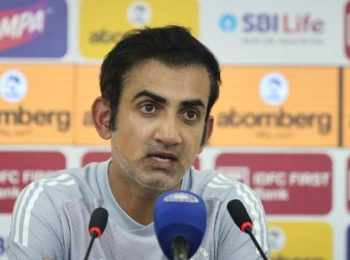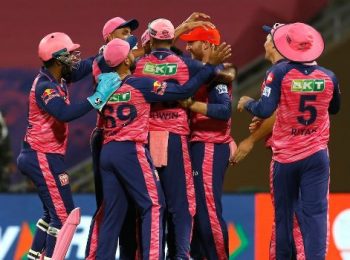India Women will face England Women in the third ODI of an intriguing series, which has already seen some compelling cricket despite challenging conditions. The second match, reduced to 29 overs per side due to persistent rain, proved difficult to judge, creating an unusual environment that tested the adaptability of both teams. However, it was clear that India struggled to adjust effectively from the outset, resulting in a subpar batting performance.
England capitalised on winning the toss under helpful bowling conditions, immediately putting pressure on India’s batting lineup. India’s lack of batting depth was apparent, underscored by the absence of Amanjot Kaur, who surprisingly missed out from the final eleven. Whether rested or dropped, her absence was palpable. Amanjot, who echoes the impact of Australia’s Tahila McGrath—a valuable cricketer who can strengthen the lower middle order and contribute crucial overs—would certainly have made India more robust and versatile.
Her absence notably left India light, putting greater pressure on all-rounder Deepti Sharma, who has been consistently excellent in the series. Conversely, Harmanpreet kaur, India’s captain, has yet to find her rhythm with the bat, despite demonstrating commendable leadership qualities. Harmanpreet’s captaincy has undeniably been effective, guiding the team to a 3-2 lead in the preceding T20 series and setting up the opportunity to clinch both series if victorious in the decisive ODI. However, her batting form remains a major concern ahead of the upcoming World Cup.
This final ODI thus represents a critical juncture for Harmanpreet, not only from a team perspective but also individually. India’s top order has shown vulnerability, and skipper’contributions with the bat are desperately needed to reinforce the lineup. Her leadership skills are evident, but securing runs will significantly bolster her confidence and solidify India’s batting foundation.
Nevertheless, India’s spirit and relentless desire to win have been highly commendable. Their persistent competitiveness, highlighted by intense and sometimes overenthusiastic appeals—such as questioning Tammy Beaumont’s dismissal for obstructing the field, despite clear evidence to the contrary—reveals a fiercely competitive team dynamic. While such enthusiasm occasionally spills over, it’s reflective of their determined approach, which has generally served them well.
India’s excellence in bowling and fielding has notably outshone England’s performance throughout both the T20 and ODI series. Despite dropping a couple of catches, their overall fielding standard has exceeded that of their opponents, showcasing agility, energy, and tactical discipline. This has kept India consistently competitive, even in challenging circumstances.
On the other hand, England will be buoyed by their performance in the last ODI at Lord’s, notably boosted by Sophie Eccleston’s return to near-peak form. Eccleston’s bowling, infused with renewed energy and sharpness, has been increasingly troublesome for India’s top order. Her deliveries have effectively created confusion regarding footwork, leaving batters hesitant and often stuck in their crease. Eccleston’s resurgence, paired with Charlie Dean’s reliable performances, significantly enhances England’s bowling threat.
England’s bowling combination is further strengthened by including a third spinner, Linsey Smith. Despite uncertainty about conditions at Chester-le-Street, which typically doesn’t favor spin heavily, England clearly benefits strategically from playing three spinners. Therefore, it would be surprising if they deviated from this formula, as it noticeably improves the balance and potency of their attack.
Additionally, England’s batting lineup gains solidity with Amy Jones and Tammy Beaumont at the top. Jones, having found form recently, and Beaumont’s consistency provide a strong foundation. Moreover, Nat Sciver-Brunt’s return to the team significantly lifts their batting and overall team morale. Consequently, England enters the match marginally favored, albeit narrowly, which underscores the competitive nature of this closely contested series.
For India, however, a long-term strategic consideration remains the batting order, specifically involving young opener Shafali Verma. Pratika Rawal has undoubtedly performed commendably, justifying her inclusion at the beginning of the series through consistent performances. Still, Verma’s talent and potential impact at the top remain substantial. Based on observations throughout both series formats, it appears imperative for India’s team management to find a way to integrate Verma effectively into the top three batting positions before the World Cup commences.
In summary, the upcoming ODI is set to be highly competitive and pivotal for both teams. England will look to maintain their recent momentum and leverage their formidable spin bowling trio, while India will aim to rectify batting concerns, particularly through skipper Harmanpreet Kaur’s crucial return to form. The match holds significant implications,
offering not only immediate series victory but also valuable insights ahead of the forthcoming World Cup.



























